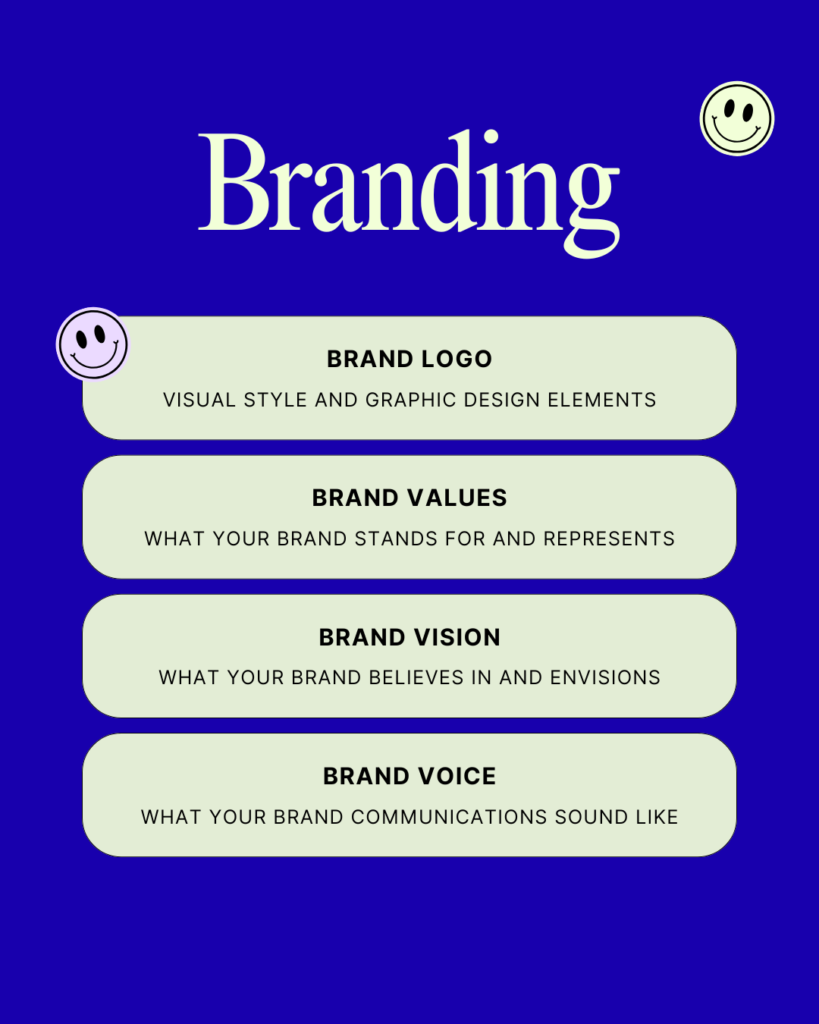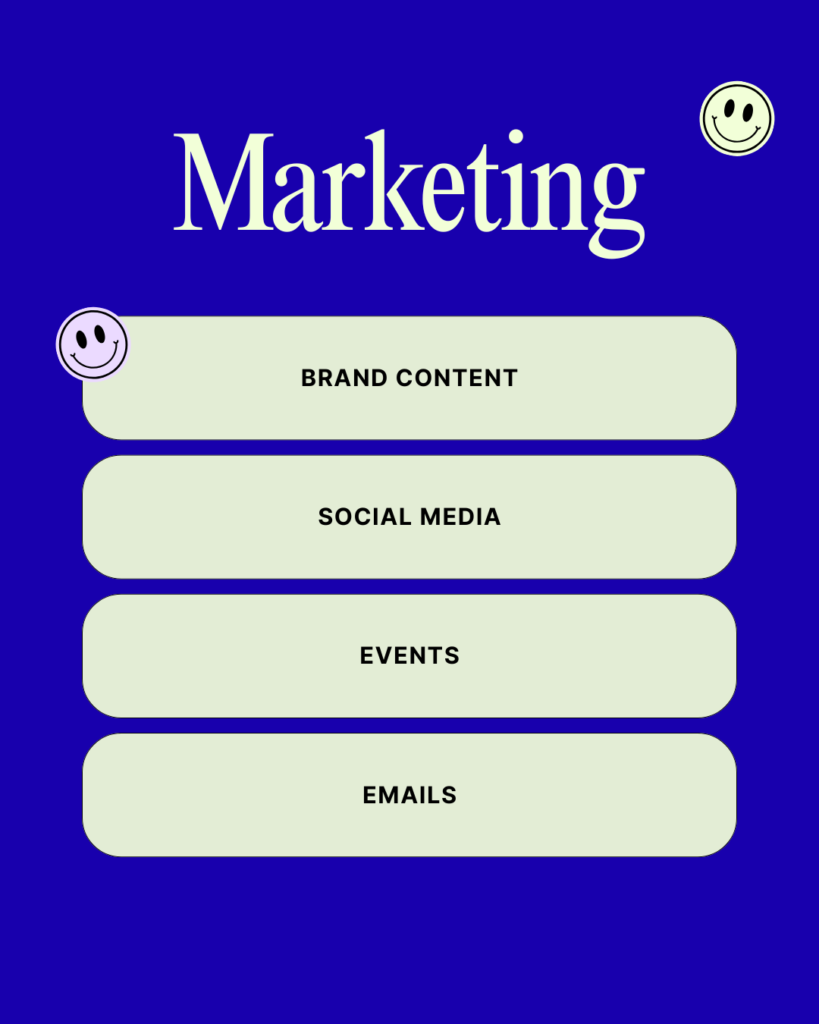Marketing can make or break your small business. Whether you’re just starting out or looking to scale your brand, having a strong marketing strategy is key to staying visible, relevant, and profitable in today’s digital-first world.
In this guide, we break down the most effective marketing channels, proven growth strategies, and key performance metrics to help you market smarter, not harder. From branding basics to video content and SEO, here’s your step-by-step roadmap to winning more attention, engagement, and sales in 2024 and beyond.

Branding vs. Marketing: What’s the Difference?
Branding is who you are—your logo, your tone, your values, and the emotional experience you create for customers.
Marketing is how you spread the word—through content, ads, social media, events, emails, and more.
Your brand builds trust. Marketing builds reach. You need both.


What Makes a Brand Marketable?
Think of your brand as your storefront. The way it looks, feels, and communicates should make a lasting impression. A marketable brand is:
✅ Visually appealing (logo, colors, typography)
✅ Clear in its mission and message
✅ Consistent across platforms
✅ Rooted in customer experience
Branding Checklist for Small Businesses
Customer Experience
- Is your product/service high quality?
- Are you responsive and respectful to customers?
- Do you deliver on your promises?
Company Identity
- Do you have a unique business name and domain?
- Are your core values and mission clear?
- Is your business legally registered?
Visual Identity
- Do you have a memorable logo?
- Is your brand palette aligned with your niche?
- Does your website and social media look polished?
8 Key Marketing Channels to Grow Your Small Business
1. Word of Mouth
Still one of the most powerful and cost-effective strategies. Encourage referrals with giveaways, loyalty rewards, or influencer partnerships.
💡 Pro Tip: Want an example? Swish Oral Care created a seamless customer experience so good that patients became their biggest promoters—completely organically.
2. Video Marketing
93% of marketers say video is essential. Create short-form content for platforms like Instagram Reels, TikTok, and YouTube Shorts, or longer-form videos for YouTube and podcasts.
📹 Need inspiration? Explore types of marketing videos.
3. Content Marketing
Create helpful, educational, or entertaining content that builds trust and attracts your audience. Start a blog, share tips on Instagram, or launch a podcast.
Use tools like:
- AnswerThePublic – find what your audience is searching
- ChatGPT – generate blog drafts
- Canva – design stunning visuals
4. A Great Website
Your website is your digital headquarters. Make sure it’s branded, clean, and functional.
Tools to get started:
- Squarespace – All-in-one website builder
- Leadpages – Create high-converting landing pages
- Google Domains – Register your business domain
5. Email Marketing
Build relationships with personalized email campaigns. Tools like Mailchimp or ConvertKit make it easy to automate and segment your audience.
Quick tips:
- Offer a discount or freebie in exchange for emails
- Personalize subject lines
- Don’t over-send (1–2 emails/week is plenty)
6. SEO (Search Engine Optimization)
Rank higher on Google by optimizing your site for search. Long-term, SEO gives you organic traffic that keeps compounding.
Top SEO tools:
7. Paid Advertising
Speed things up with strategic paid campaigns. Platforms like Google Ads, Meta Ads, and LinkedIn Ads let you target exact audiences.
Types of Paid Ads:
- Search Ads (text-based on Google)
- Display Ads (graphic banners on websites)
- OOH Ads (billboards, posters, transit ads)
📈 Test small budgets first, and optimize using Google Search Console.
8. Branded Merchandise
From hats to tote bags—merch turns customers into brand ambassadors. Take notes from Courage Bagels LA whose merch created buzz far beyond their storefront.
Must-Have Marketing Metrics to Track
| Metric | Why It Matters | Tools to Track |
|---|---|---|
| Revenue | Measures ROI on marketing campaigns | QuickBooks, Wave, Freshbooks |
| Customer Reviews | Builds trust, boosts SEO | Google My Business, Yelp |
| Email Open/Click Rate | Shows how engaging your emails are | Mailchimp, ConvertKit |
| Backlinks (Do-follow) | Improves SEO authority | Ahrefs, Moz, Semrush |
| Site Traffic | Tracks user behavior and marketing impact | Google Analytics |
| Social Media Metrics | Measures reach and engagement | Instagram Insights, X Pro |
| Conversion Rate | Tells you what’s working (or not) | Google Analytics, HubSpot |
Small Business Marketing Strategy Template
Here’s a plug-and-play template to kick off your marketing journey:
1. Executive Summary
Brief overview of your business goals and target audience.
2. Market Analysis
Research your niche, competitors, and customer pain points.
3. Unique Selling Proposition (USP)
Why should someone choose you? Define what makes you different.
4. Marketing Goals
SMART goals: Specific, Measurable, Achievable, Relevant, Time-bound.
5. Channel Plan
Which platforms will you use (Instagram, SEO, YouTube, etc.)?
6. Content Plan
Topic ideas, content formats, and a simple calendar.
7. Budget
Estimate ad spend, tools, merch, and freelance support.
8. KPIs
Track leads, conversions, site visits, social growth, etc.
9. Action Plan
Map out your first 90 days of content, launches, or promotions.
10. Review & Refine
Check performance monthly and adapt based on results.
Final Thoughts: Marketing is a Marathon
Marketing your small business isn’t about going viral overnight. It’s about showing up consistently, building relationships, and constantly experimenting. Try new things, measure what works, and double down on your strengths.
💬 Follow us for more creative insights and small business marketing tips!
Instagram @pari_pixel
Facebook
X (formerly Twitter)
Behance
For more tips and resources, stay connected with us at PARIPIXEL.COM.
From everyone at Pari Pixel, we wish you growth, success, and clarity in your marketing journey



